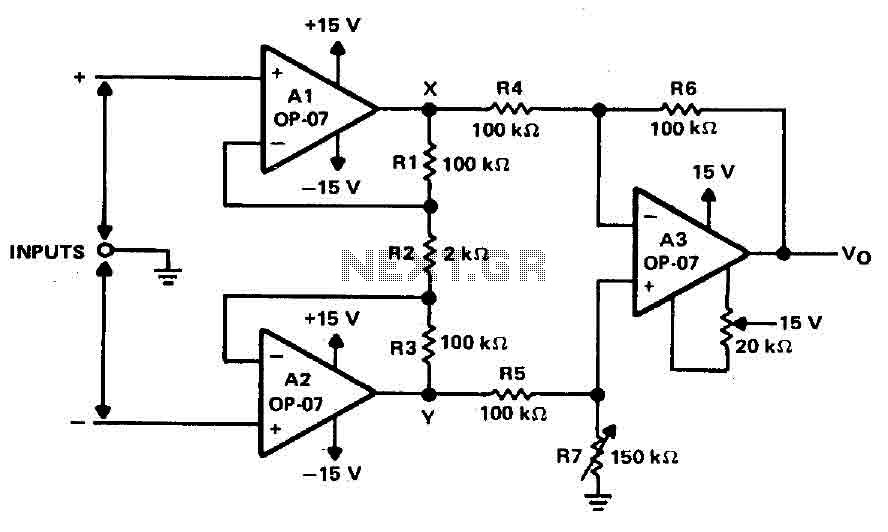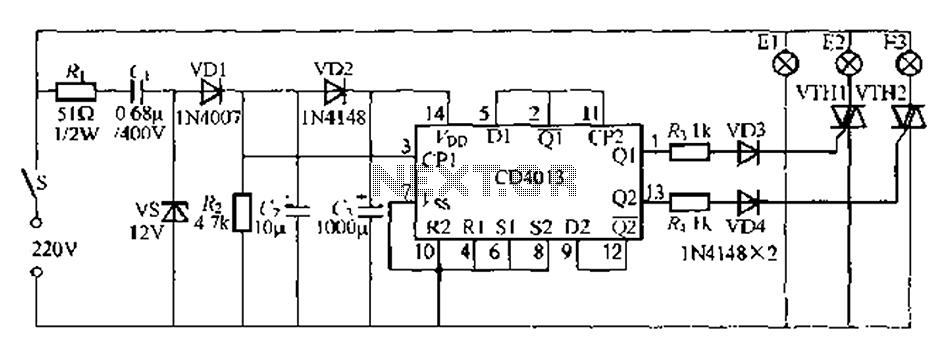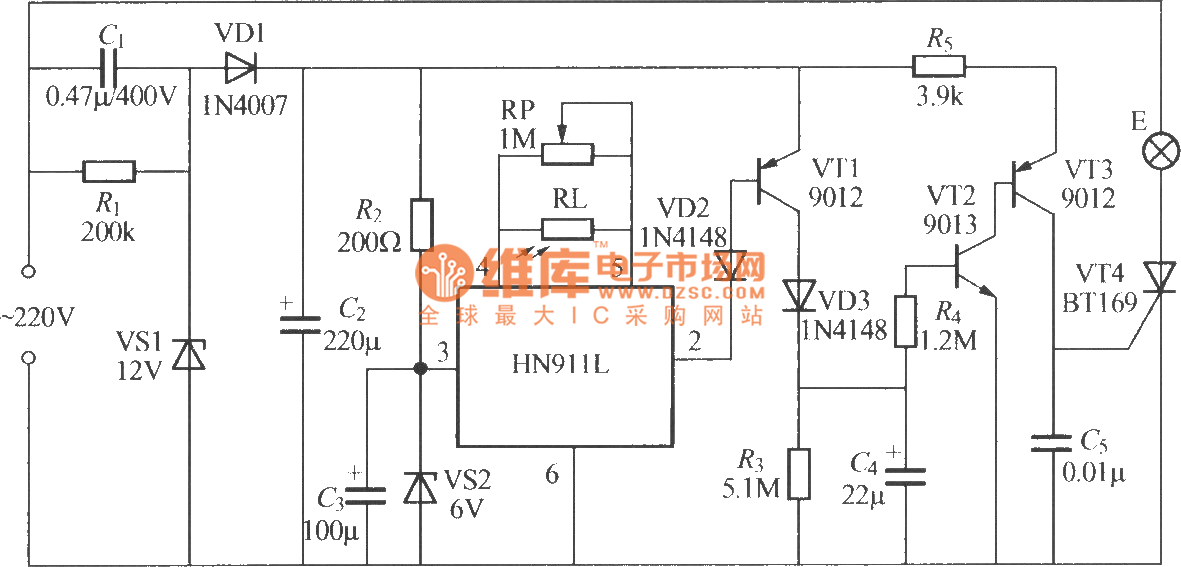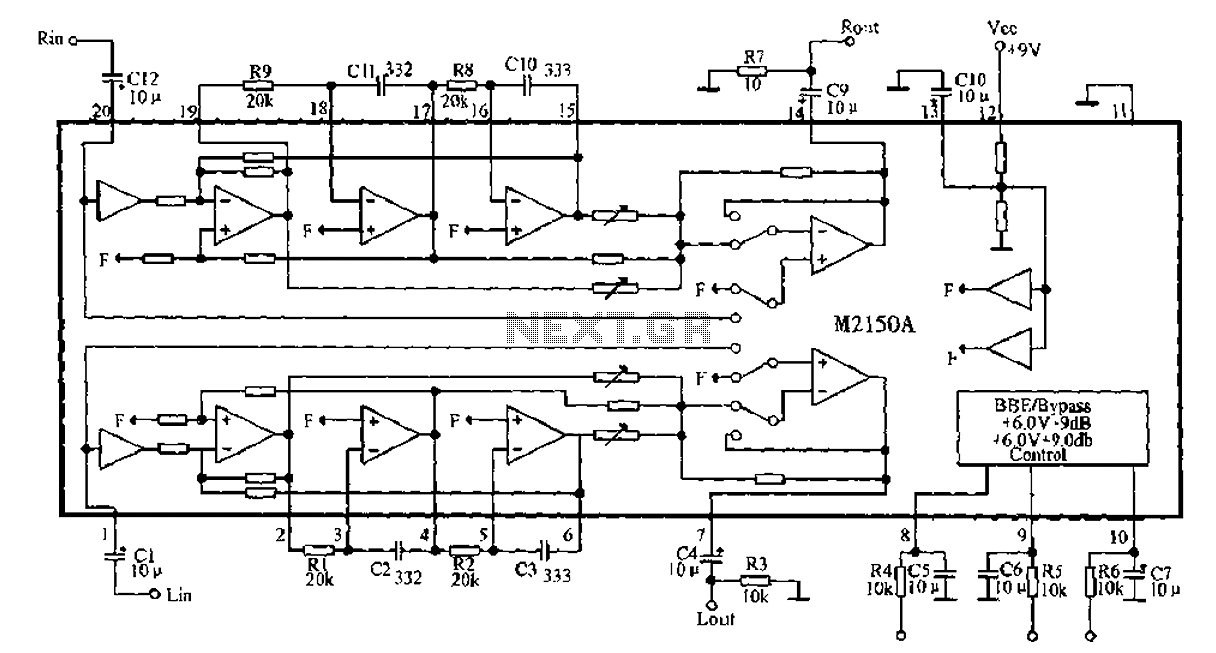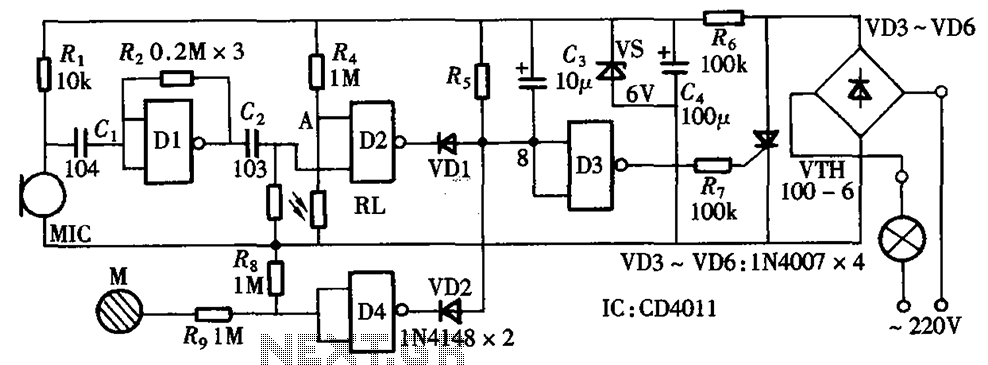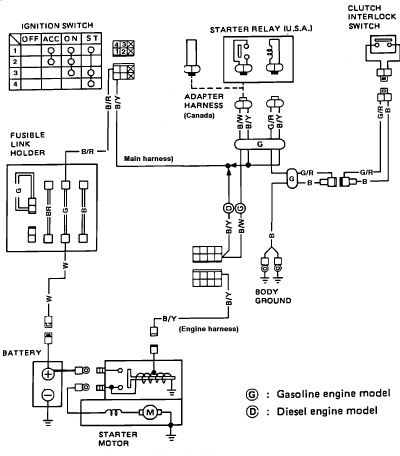
1 Kw flip-flop flasher circuit
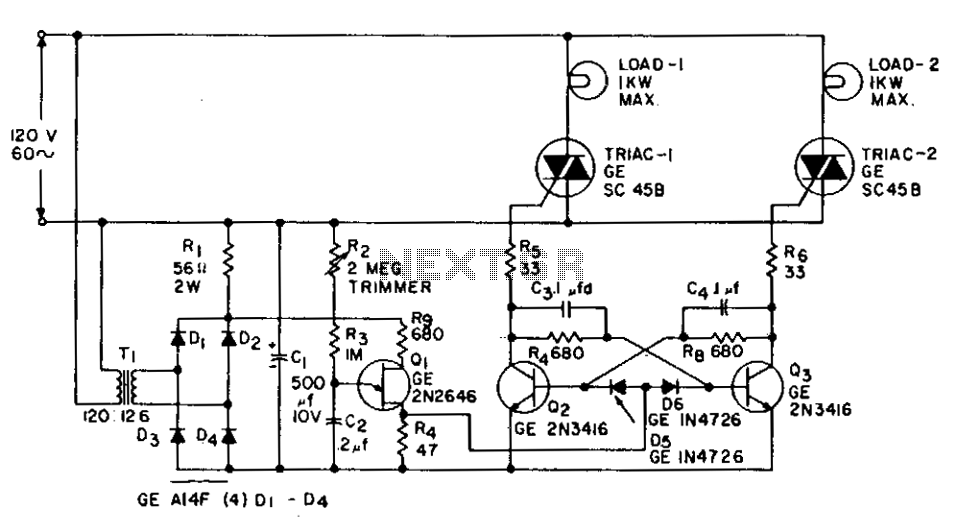
This application involves a static switch circuit where the control logic is implemented using a flip-flop, which is driven by a unijunction transistor. The flashing rate of the circuit can be adjusted, ranging from approximately 0.1 seconds to a 10-second cycle time.
The static switch circuit utilizes a flip-flop as its primary control element, allowing for the toggling of the output state in a reliable manner. The flip-flop can be configured in various modes, such as a bistable or monostable operation, depending on the specific application requirements. In this instance, the flip-flop is controlled by a unijunction transistor (UJT), which serves as a trigger device to initiate state changes.
The unijunction transistor is characterized by its ability to produce a sharp pulse output when a certain threshold voltage is exceeded. This pulse is used to toggle the flip-flop, thus controlling the switching action of the circuit. The timing characteristics of the circuit can be fine-tuned by adjusting the resistive and capacitive components connected to the UJT, which in turn modifies the charging and discharging cycles of the timing capacitor.
The adjustable flashing rate, which can range from 0.1 seconds to 10 seconds, is achieved through a variable resistor or potentiometer in conjunction with a timing capacitor. By changing the resistance or capacitance values, the time constant of the RC network can be altered, allowing for precise control over the frequency of the output signal. This flexibility makes the circuit suitable for various applications, including indicator lights, alarm systems, or any scenario requiring a timed on/off switching action.
Overall, the combination of a flip-flop and a unijunction transistor in a static switch circuit provides a robust solution for applications requiring controlled timing and switching capabilities. The design can be further enhanced by incorporating additional features such as LED indicators or output drivers to interface with other components in a broader electronic system.This is an application of the static switch circuit where the control logic is a flip-flop which is controlled by the unijunction transistor. The flashing rate can be adjusted from about 0,1 second to a 10 second cycle time.
The static switch circuit utilizes a flip-flop as its primary control element, allowing for the toggling of the output state in a reliable manner. The flip-flop can be configured in various modes, such as a bistable or monostable operation, depending on the specific application requirements. In this instance, the flip-flop is controlled by a unijunction transistor (UJT), which serves as a trigger device to initiate state changes.
The unijunction transistor is characterized by its ability to produce a sharp pulse output when a certain threshold voltage is exceeded. This pulse is used to toggle the flip-flop, thus controlling the switching action of the circuit. The timing characteristics of the circuit can be fine-tuned by adjusting the resistive and capacitive components connected to the UJT, which in turn modifies the charging and discharging cycles of the timing capacitor.
The adjustable flashing rate, which can range from 0.1 seconds to 10 seconds, is achieved through a variable resistor or potentiometer in conjunction with a timing capacitor. By changing the resistance or capacitance values, the time constant of the RC network can be altered, allowing for precise control over the frequency of the output signal. This flexibility makes the circuit suitable for various applications, including indicator lights, alarm systems, or any scenario requiring a timed on/off switching action.
Overall, the combination of a flip-flop and a unijunction transistor in a static switch circuit provides a robust solution for applications requiring controlled timing and switching capabilities. The design can be further enhanced by incorporating additional features such as LED indicators or output drivers to interface with other components in a broader electronic system.This is an application of the static switch circuit where the control logic is a flip-flop which is controlled by the unijunction transistor. The flashing rate can be adjusted from about 0,1 second to a 10 second cycle time.
